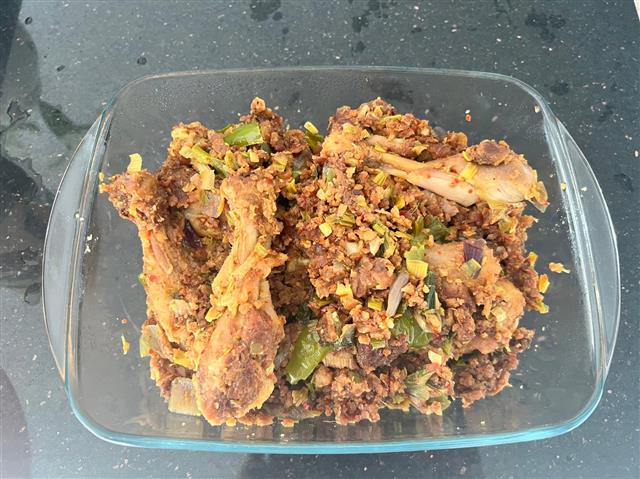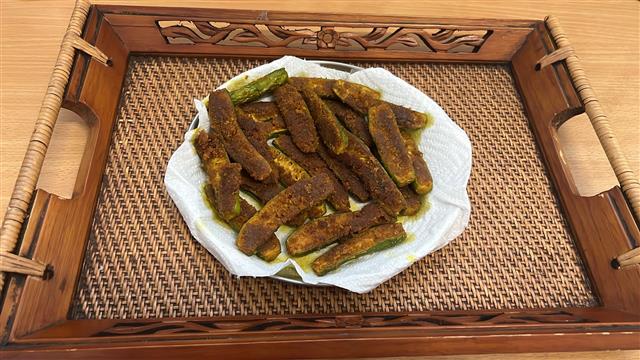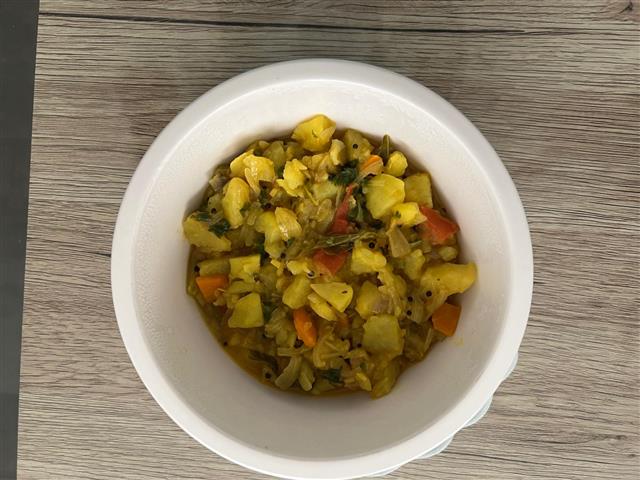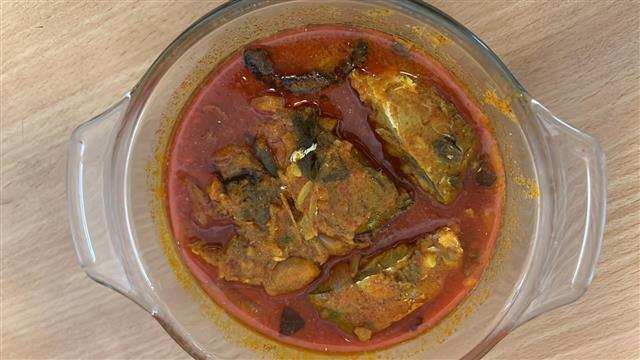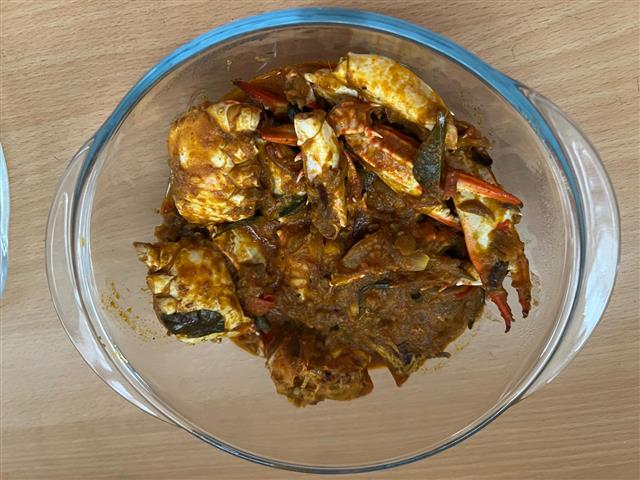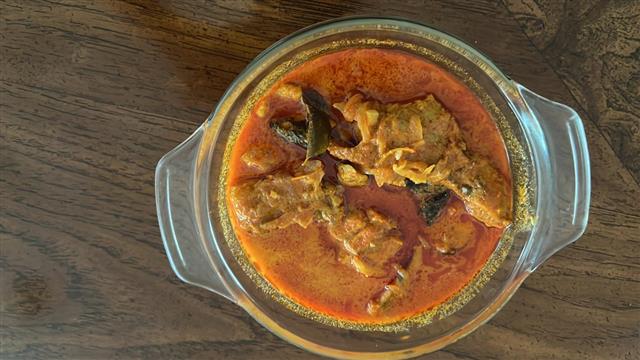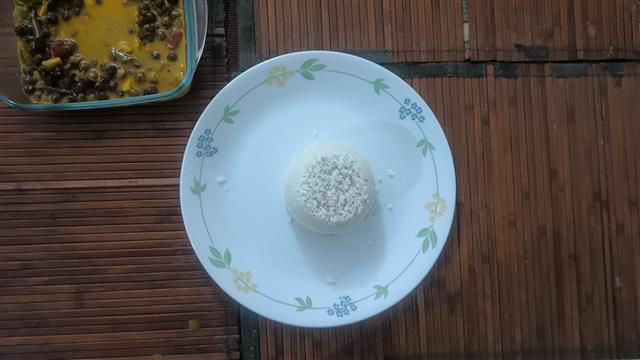
Palappam
(4 reviews)Palappam is a traditional Kerala dish—thin bowl-shaped pancakes made from fermented rice and coconut batter. Palappams with crispy edges and soft centers are healthy and delicious. Palappams are paired with vegetable stew, Egg curry. Chicken or Fish curry making it a favourite cuisine of every Keralite. In Earlier days, fermentation was done with toddy, but now its replaced with yeast for ease and consistency. Every bite of Palappam reminds us of our Mom's love and the rich Kerala tradition
Palappam Audio Recipe
Ingredients
Directions
- Thoroughly rinse the raw rice and soak overnight. The next day, blend it with grated coconut, cooked rice, and enough water to form a smooth, pourable batter.Mix 1/4 teaspoon of yeast and 2 teaspoon of sugar into the batter. Stir and allow it to ferment . After fermentation, add salt and gently stir the batter. Heat an appam pan (appachatti) or a non-stick kadai on medium heat. Pour a ladle of batter and immediately rotate the pan in a circular motion—this ensures crispy thin edges while keeping the center soft and tender. Cook on low heat for 2–3 minutes until the edges turn crisp and the center is soft and cooked. Serve hot with curry of your choice
Cooking Tips
1.Use lukewarm water for fermentation 2.Rotate the pan quickly after pouring the batter: This creates the edges lacy while keeping the center thick and soft. 3.Always cover the appam while cooking and keep the flame low to medium to ensure crispy edges without burning
How to Serve
Palappam is usually served with Kerala-style vegetable stew, coconut milk curry, or egg curry for breakfast or dinner. For non-vegetarians, Palappam with chicken or mutton curry is a rich treat for the taste buds. For kids, it can be served with sweetened coconut milk
The Story Behind Palappam
Palappams take me back to my childhood. I still remember how my mom used to make those perfectly crispy yet soft palappams — a favorite for all of us siblings. Whenever my North Indian friends came home, they would fall in love with them too. Among all the dishes my mom prepared, palappams were always their top pick. They were fascinated by how these soft-centered, lacy-edged pancakes were made with such care.
Unlike dosa or idli, appams aren't as common in other parts of South India. My grandparents often spoke about the traditional way they used to prepare appams — using toddy instead of yeast. They called it Kalappam, and they always had a story or two to share about it.
Even today, whenever our family gets together, palappams are always on the menu
Pro Tips for Perfect Results
Proper fermentation: Well-fermented batter will look for a bubbly, airy texture and a mildly sour aroma.
Rice-to-coconut ratio is the key to make right soft center and crispy lace edges Palappam
c} Don't skip cooked rice—it adds fluffiness.
Swirl immediately after pouring batter to create crispy edges
Always Cook on low to medium heat
Palappam Variations
Kallappam -Made with toddy (kallu) or yeast
Wheat Appam (Godhumai Appam)- made with wheat flour and jaggery
Storing & Reheating Tips
Storing:
Store leftover appams in an airtight container in the refrigerator for up to 2 days.
Place banana leaf between each appam to prevent sticking.
Reheating:
Reheat on a non-stick pan for 30–40 seconds on low heat.
Do not use microwave to heat Palappams—they may turn rubbery and lose texture.
Sprinkle a few drops of water while reheating to bring back softness
Common Mistakes to Avoid
1 Under-fermented batter will result in flat and dense Palappams. So always ensure proper fermentation 2.If the batter is too thick, Palappams won't spread well 3.If the batter is too watery Palappams won't hold shape. 4.Batter should be slightly thinner than Dosa batter. 5.Forgetting to rotate after pouring batter results in thick, uneven appams without crisp edges.
Frequently Asked Questions
1.Can I make Palappam without yeast or toddy? Yes! You can use baking soda or ferment naturally overnight in a warm place, though flavor and texture may slightly differ.
2.Why is my Palappam not soft or lacy? This usually happens due to poor fermentation or incorrect batter consistency. Ensure the batter is well-aerated and slightly thin. 3.Why does the batter smell sour? Over-fermentation can cause sourness. Always check the weather and ferment only until bubbly and mildly tangy.
Equipment Needed
Appam Pan (Appachatti)
Mixer Grinder or Wet Grinder – To grind rice, coconut, and cooked rice into a smooth batter.
Ladle – For pouring and spreading the batter in the pan.
Lid for the Pan – Essential for covering the pan and letting the appam cook evenly.
Large Bowl – For fermenting the batter properly.
